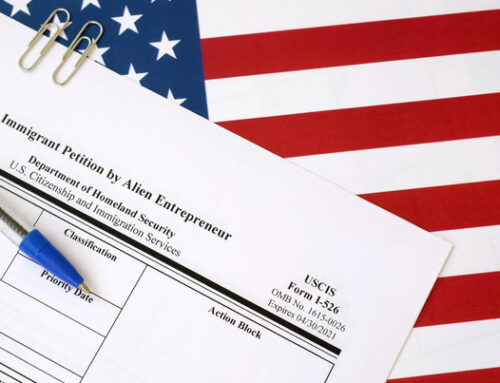The past year has been quite challenging for the immigration community in the United States. In fact, many issues date back to Covid and before then. The goal of this article is to discuss the present state and future of the EB-5 Regional Center Program in the US (the “RC Program”). The RC Program is back. However, to understand where we are, it is important to know the history which frames our present and future.
In June 2015, Senators Grassley and Leahy introduced legislation that would forever change the trajectory of EB-5. The legislation – we were told – was intended to reform and improve the program. It was a reaction to the Jay Peak scandal and Grassley’s professed desires to see (1) actual direct job creation and (2) money flow to rural projects. Unfortunately, reactionary legislation can sometimes hurt those it was intended to protect with unintended consequences. It also pitted the industry against one another. Factions grew – IIUSA, Rural Alliance, and the EB-5 Investment Coalition (“EB-5IC”).
Laura Reiff and I formed EB-5IC in response to the desire to provide a more stable regional center program that protected those it was intended to without accidentally harming them. Since 2015, we have co-labored with many in the industry. It was never the desire to have conflicts, but with competing interests there are conflicts. That all being said, EB-5IC was able to stop that initial legislation with the help of Senators and House Representatives that agreed that the legislation was overreaching.
At the same time, USCIS proposed new regulations, and in November 2019, the USCIS implemented the regulations changing TEA amounts and definitions. EB-5IC thought the regulations were unfair and filed suit to have those regulations ruled invalid. We won! Then, EB-5IC tried to strike a deal for the RC Program in June 2021. It was unable to be done. So, the program, allegedly, lapsed (I would note that in the most recent Behring Regional Center (“BRC”) case USCIS said it did not lapse). We tirelessly advocated for the program with Majority Leader Schumer’s office and House Judiciary Chair Nadler’s office. In the late hours of March 6, 2022, a deal was struck which included protection from expiring legislation (“grandfathering”) which we insisted upon. At no point did Majority Leader Schumer intend to start a new program with the legislation. Indeed, Senators Schumer, Graham, Cornyn and Chairman Nadler all sent USCIS a joint letter stating that it was never their intent for the existing regional center program to be extinguished. But, for some reason, USCIS thought the legislation did which brings us to this suit.
Laura and I spoke and agreed we had to immediately challenge this interpretation. We reached out to BRC, and BRC agreed to act as Plaintiff again. Judge Vince Chhabria was assigned the case and issued a preliminary injunction. As of the date of this article, the case is settled, and the RC Program is back! Moving forward, the question is what can we expect?
For starters, I suspect you will see more rural projects because of the reserved visas – 20% of the total each year. That being said, it does not mean that rural projects are necessarily going to really provide any advantage to any investor in 2022 or 2023. Perhaps, the reserved visas will help China in 2023. But, before then both rural projects and urban HUA projects should not provide any tangible benefit for China[1] or any other countries. There is no doubt that some rural projects will use this as a marketing trick. Do not be fooled. The real issue here goes back to investment in a safe project that maximizes the probability of permanent green card issuance and repayment of capital. These are always project specific issues that investors need to carefully analyze.
The EB-5 process begins with an I-526E. There are two parts to the I-526E review – investor related issues and project compliance. Apart from investor related issues, it is critical to ensure that the project will be EB-5 compliant. Under the new law, all projects must file an I-956F for business plan review prior to the investor filing[2]. Assuming the I-956F has been filed (and not yet approved), it is critical that the investor have his attorney review the project for EB-5 compliance. This would include whether the business plan is realistic, if the economic report accurate, and whether there are any impermissible EB-5 arrangements. It is very critical that experts in the space advise on these issues if the project is not approved. Once the experts agree that it is a compliant project, the next question is to analyze whether the project will be completed because this will impact your I-829 petition and capital repayment. This should all be reviewed prior to investing in the project.
[1] The law also grants priority processing to rural. But, that is not an expedite. Thus, the perceived benefit may be small.
[2] It is important to note that there are few projects that have an exemplar approved prior to the new law. USCIS has agreed to give deference to the approval except for the new requirements under the new law. This means that it is possible to invest in an already approved business plan as of the date of this article.







